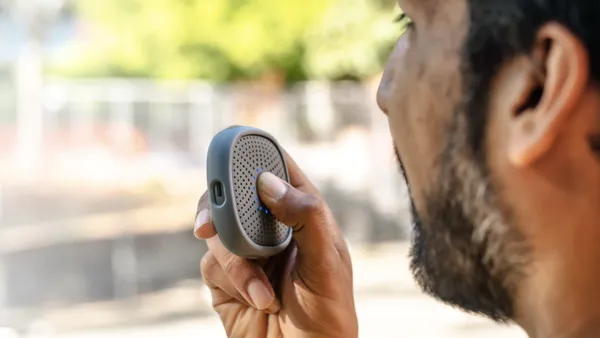Dive Brief:
- NodaFi has secured funding to grow its cloud-based computerized maintenance management system, or CMMS, CEO Jacob Pandl announced on LinkedIn.
- Base10 Partners led the $3.5 million seed round, with participation from Stage 2 Capital, MKT1 and FJ Labs, VentureBeat reported in July. The company plans to use the funding to more than double the size of its eight-person team this year, Pandl said in an email. “We’ll be…hiring across the board [for roles including] lead software engineers, product designers, account executives, a head of customer success and a head of marketing,” he said.
- NodaFi’s CMMS platform can prevent costly breakdowns and reduce the need for urgent repairs, helping facilities managers and maintenance professionals rein in their maintenance budgets, the company says.
Dive Insight:
Machine downtime is tied with workforce shortages as the most pressing challenge that facilities management and manufacturing maintenance professionals say they face, with 51.2% of respondents listing these issues as among the top three challenges they face, according to a report released by Limble in February. The report, which surveyed 252 maintenance professionals, found that facilities management teams in particular are “overwhelmingly” looking for tools and processes to improve work order management and communication with customers.
This demand has led to an increasingly crowded CMMS space, drawing interest from investors like Goldman Sachs, which led a $58 million Series B funding round for Limble last June, and Bain Capital Ventures, which led a $50 million funding round for MaintainX in December. Like those competitors, NodaFi is growing rapidly, with a “stretch goal” of increasing annual recurring revenue by 500% this year, Pandl said.
NodaFi aims to “build a common platform for facility operations, while also building deep into particular segments of the market,” Pandl said. “While there is a core set of challenges that is common to each industry [utilizing facilities management software], there are also subtleties that make each industry unique.”
NodaFi currently operates in the health and fitness, self-storage, life sciences, sports and entertainment, and community services industries, Pandl noted. Its customers include the Memphis Grizzlies NBA franchise, Staples, and the Salvation Army, Pandl said in his email to Facilities Dive. The company is especially enthusiastic about the self-storage industry, which has a big unmet need for modern operations solutions, he added.
To stand out in the crowded CMMS industry, NodaFi needs to “demonstrate clear, obvious value at every stage of the process, whether dealing with maintenance technicians, custodial staff, directors of facilities, CFOs or CEOs,” while ensuring a user-friendly transition from clients’ previous facilities management systems to NodaFi, Pandl said.
For example, NodaFi helped the YMCA transfer 22,450 records away from its previous CMMS platform, which “suffered from lackluster reporting, a clunky [user experience] and poor [customer experience,” automating more than 2,150 preventative maintenance tasks and enrolling 4,370 YMCA assets into the NodaFi asset-tracking system, according to a case study on the company’s website.
NodaFi’s tools are designed to help facilities managers save time on a range of operational tasks, Pandl said. The NodaFi Insights tool, for instance, can automatically calculate replacement asset values to signal to users when it’s time to replace an asset, while its Smart Signs tool offers “two-tap issue reporting and custom routing [that drives] faster resolutions,” according to the YMCA case study.
The startup’s technology also allows users to produce and deploy QR codes across facilities for applications like vendor check-ins, while enabling them to access HVAC equipment manuals and report issues at a specific location within the facility, Pandl said.
“A manager doing a facility audit using a procedure on their NodaFi app might save 20 minutes versus doing it using paper and pencil [and] the corrective actions we automatically generate from that audit might save an additional five minutes each,” he said.













